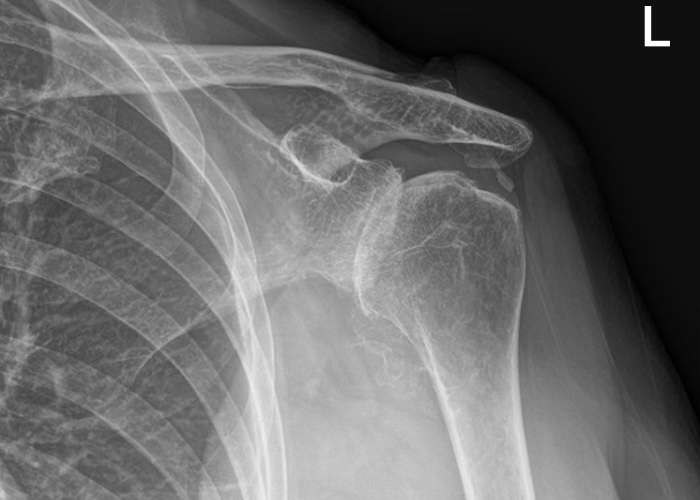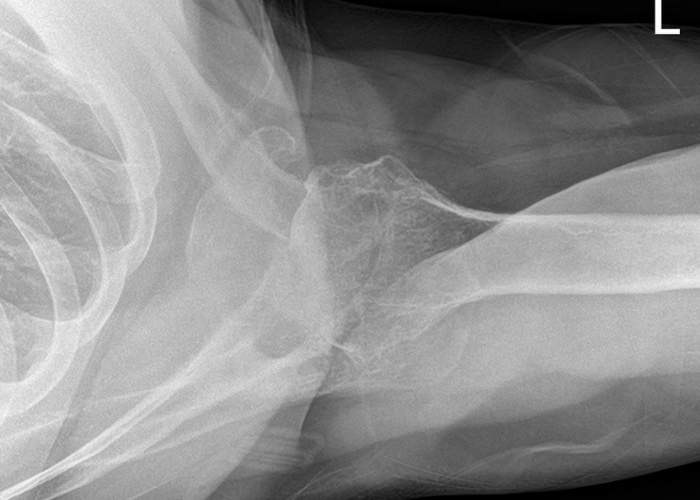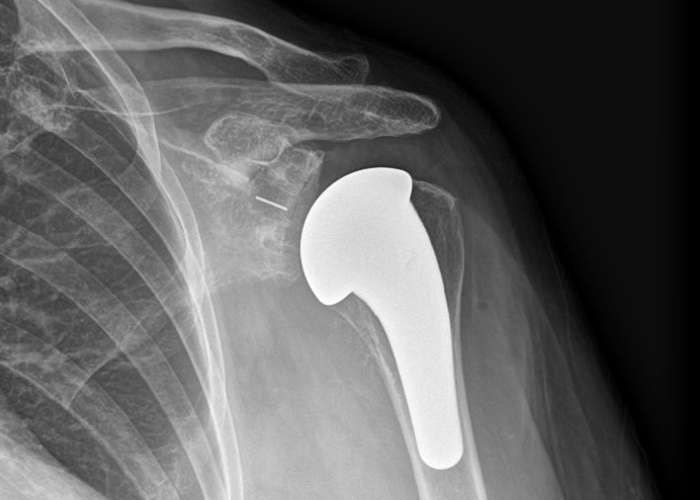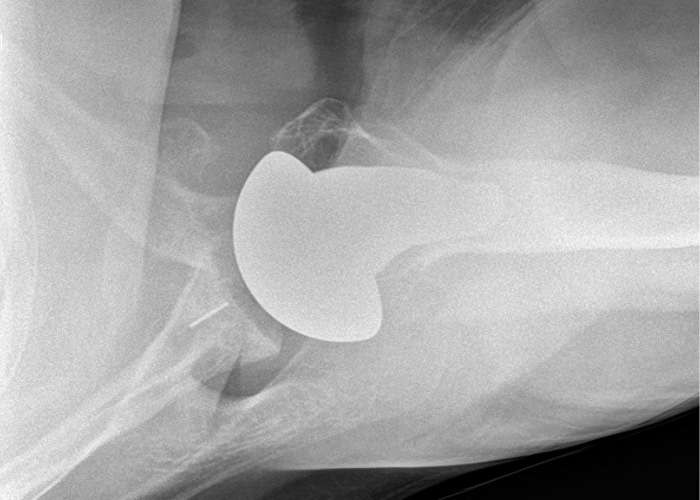What is shoulder arthritis?
Arthritis in the shoulder occurs when there is thinning or loss of the articular cartilage that covers the bones, and ultimately painful bone-on-bone contact develops. Articular cartilage is the smooth, soft tissue that covers the ends of the ball and socket within the shoulder joint. When present, it allows for smooth, frictionless, pain free motion of the joint. Patients who have shoulder arthritis have articular cartilage that has become thin, worn or is damaged. This causes pain, stiffness, and in some patients, a locking or catching sensation. Dr. Leslie Vidal, orthopedic shoulder specialist, helps patients from Vail, Eagle and Summit County, and those in the surrounding Denver area who have shoulder arthritis and can help them get back to a pain free, active lifestyle.
Where in the shoulder does arthritis occur?
Because the shoulder is not a weight bearing joint, it is the third most common joint affected by arthritis; the knee is the most common, followed by the hip. Literally meaning “inflamed joint” arthritis can occur in any joint in the body. In the shoulder, two different joints can be affected by arthritis: the glenohumeral joint and the AC or acromioclavicular joint. The glenohumeral joint is located where the ball of the humerus (arm bone) meets the glenoid (shoulder socket). The AC joint is located where the clavicle (collarbone) meets the acromion (the bony roof of the shoulder, near the arm).
What are the types of arthritis in the shoulder?
Shoulder arthritis is classified into types and can include:
Osteoarthritis:
Known as “wear-and-tear” or degenerative arthritis, osteoarthritis occurs when the smooth articular cartilage at the ends of the bones wears away. The cartilage becomes rough or frayed and the protective space between the bones decreases. Eventually, the bones rub against each other which causes pain and inflammation. Patients over the age of 50 are more likely to develop osteoarthritis.


Rheumatoid Arthritis:
RA is an autoimmune disease that can affect multiple joints within the body. Rheumatoid arthritis differs from osteoarthritis in several different ways. RA is an inflammation of the joint lining, called the synovium, which causes pain and stiffness in the joint. Both Osteoarthritis and Rheumatoid arthritis can affect either or both joints of the shoulder.
Post-Traumatic Arthritis:
Arthritis which occurs after trauma or injury to the shoulder. Shoulder dislocations or a fracture can cause damage to the joint surface which may contribute to pre-mature wear-and-tear that can lead to post-traumatic arthritis.
Rotator Cuff Tear Arthritis:
Also called rotator cuff tear arthropathy, this type of arthritis in the shoulder develops after a rotator cuff tendon tear. A long standing rotator cuff tear will no longer hold the head of the humerus within the glenoid socket, allowing the humerus to rub against the acromion. The resulting damage can cause arthritis to develop within the joint and is called rotator cuff tear arthritis.
What are the symptoms of shoulder arthritis?
- Pain which can be a dull ache, or very sharp
- Decreased range of motion
- Stiffness in the shoulder
- Difficulty or the inability to move the arm above the head
- Weakness in the joint
- Pain at the top of the shoulder
- Night pain, especially after activity
- Crepitus, or a grinding, crunching sensation
How is shoulder arthritis diagnosed?
Dr. Leslie Vidal will obtain a detailed patient history and will conduct a thorough physical examination. Areas of tenderness while moving the shoulder through a range of exercises will help her test the mobility of the joint and indicate the severity of shoulder arthritis. Several diagnostic tests may be used to confirm the diagnosis and to check for other shoulder conditions. Diagnostic tests may include an x-ray, CT Scan and an MRI Scan.
What is the treatment for shoulder arthritis?
The goal for shoulder arthritis treatment is to eliminate pain and restore range of motion. Depending on the severity of the shoulder arthritis, patients may be treated non- surgically or surgically.
Non-surgical treatment:
Dr. Vidal prefers a conservative approach to many orthopedic shoulder conditions and may suggest careful watching and a few treatments that lessen the symptoms of shoulder arthritis. Conservative treatments may include rest, hot and cold therapy, and anti-inflammatory medications such as ibuprofen. For some patients, corticosteroid or biologic shoulder injections may be appropriate. Physical therapy is often used to help restore range of motion and to strengthen the muscles that surround and stabilize the joint.
Surgical treatment:
If non-surgical measures fail to alleviate the pain of shoulder arthritis and restore range of motion, surgical treatment may become necessary. Dr. Vidal will devise a treatment plan based on the patient’s level of activity, age, severity of arthritis and intensity of the symptoms. Surgical options include:
- Shoulder Arthroscopy – Mild glenohumeral arthritis may be treated with arthroscopic shoulder surgery. This minimally invasive surgical technique uses a small camera, called an arthroscope and small, specialized instruments to operate within the shoulder. The camera displays pictures from within the joint onto a screen and Dr. Vidal uses the images to guide the surgical instruments. During arthroscopy, Dr. Vidal may perform one or more of the following:
- Debridement – Trim or smooth down torn tissue
- Synovectomy – Removes the portion of the synovium (joint lining) that is inflamed
- Bone spur removal
- Shoulder Replacement (Arthroplasty) – Recommended for advanced cases of shoulder arthritis, shoulder arthroplasty replaces the damaged or worn joint with metal and plastic components which create new joint surfaces. Types of shoulder replacement surgery include:
- Total shoulder arthroplasty – or anatomic shoulder replacement. Replaces the head of the humerus with a metal ball and the glenoid with a new plastic socket. This results in smooth, painless range of motion and allows for pain-free strengthening throughout recovery.
- Hemiarthroplasty – Replaces just the head of the humerus with an artificial component, and leaves the native socket.
- Reverse shoulder arthroplasty – Often performed for Rotator Cuff Tear Arthropathy, in the setting of irreparable rotator cuff tears, this total shoulder replacement affixes the new metal ball to the glenoid, instead of the humerus. The plastic cup is attached to the upper end of the humerus, instead of the glenoid. The result relies on different muscles to move the arm and shoulder, and not on the rotator cuff, resulting in decreased pain, improved range of motion and strength.


Shoulder Arthritis Specialist
Shoulder arthritis is most often a wear-and-tear condition that causes pain, weakness and decreased range of motion in the shoulder. There are many new and innovative treatments for shoulder arthritis, that don’t always involve surgery. Shoulder arthritis specialist, Doctor Leslie Vidal, provides diagnosis and both surgical and nonsurgical treatment options for patients from Vail, Eagle and Summit County, and those in the surrounding Denver area, who have painful symptoms associated with shoulder arthritis. Contact Dr. Vidal’s team today!
